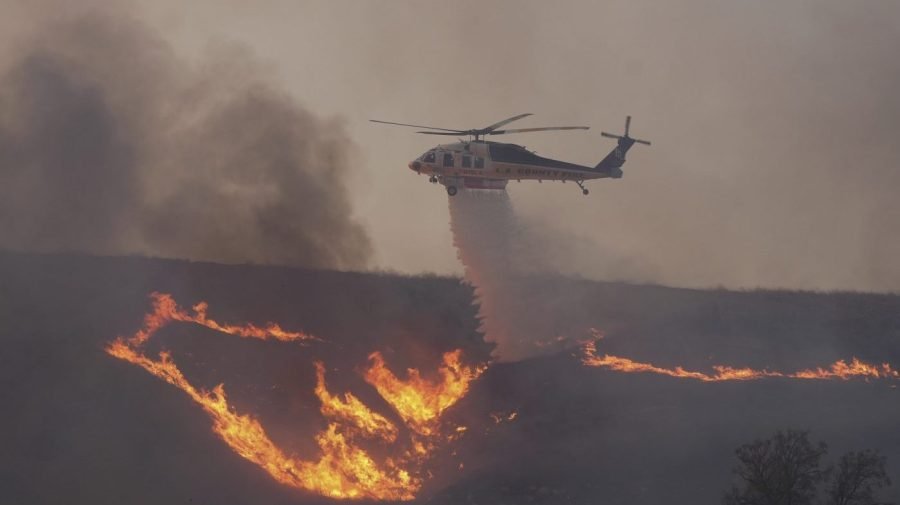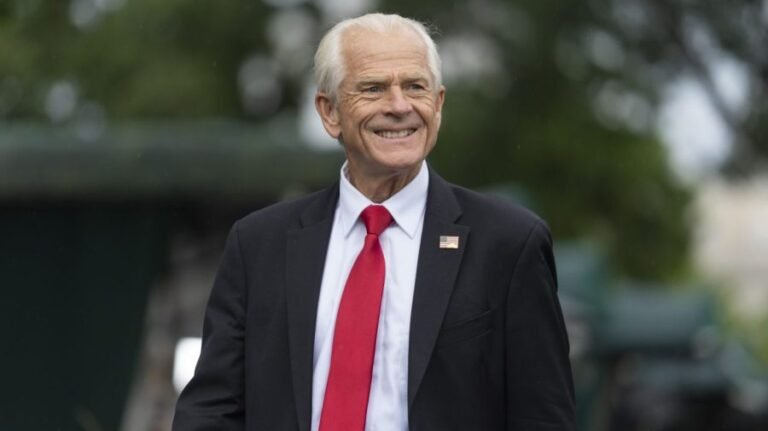
California has completed a multi-year initiative to optimize its firefighting capacity, with the arrival of the final two of 16 specialty helicopters.
The acquisition of these last two Sikorsky S-70i Fire Hawk helicopters, according to state officials, now gives California “the largest civilian helicopter firefighting fleet in the world.”
“One cannot understate the importance of these investments,” Gov. Gavin Newsom (D) said at a Thursday press conference.
“Seasons are no longer apt as it relates to California’s realities — they’re year-round,” the governor added.
Newsom stressed that within the previous 24 hours alone, California experienced 3,600 lightning strikes — initiating about 30 larger fires, 25 of which were on federal land.
Just 3 percent of California’s forests are managed by the state, while 57 percent is controlled by the federal government. Another 40 percent is privately owned.
Because so many of the Golden State’s forests are in federal hands, Newsom last month sent a model executive order to the White House for the president’s consideration.
Due to federal cuts, the U.S. Forest Service has lost 10 percent of its frontline workforce and 25 percent to support personnel — a decision that the governor’s office said is poised to impact wildfire response this year.
Newsom blasted the federal government at Thursday’s press conference for including a reduction of $450 million in grants for vegetation and forest management in the “Big Beautiful Bill” — criticizing President Trump’s support for “raking the forest.”
“We’ve never received a rake, and all we received this year were cuts of $450 million nationwide to aid and advance those efforts,” Newsom said.
“In the absence of federal leadership and responsibility, we are stepping into that void,” the governor declared.
California, Newsom pledged, is “more committed to prepositioning, protecting and continuing to prevent to the extent possible the impacts of mother nature.”
The completion of Fire Hawk helicopter deliveries marks the fulfillment of commitments made two decades ago regarding the need to invest in technologies that be an upgrade from those previously available — 1950s-engineered Huey US1H helicopters used during the Vietnam War.
CAL FIRE, which first used the Huey helicopters for reconnaissance and transport in the 1960s, eventually adapted them for fire suppression — thanks to their ability to function in challenging terrain, per the governor’s office.
The transition to the S-70i Fire Hawks, which began in 2018, expands water-dropping capacity up to three times that of their predecessors, a fact sheet from Newsom’s team stated. The helicopters are also outfitted for extended night operations and can operate during these hours at low altitudes and over complex terrains.
The Fire Hawks, per the governor’s office, also offer a higher degree of flight safety and can hold more crew members, offering greater deployment flexibility.
Without the deployment of the Fire Hawks, the governor noted, the blazes that burned in the Los Angeles region this past winter would have been far worse than they were. These helicopters, he explained, also regularly do nighttime suppression.
“At the end of the day, these helicopters are here to serve and support the people of California, both our residents and our visitors,” Joe Tyler, CAL FIRE chief and director, said at the press conference. “It is to protect our resources.”
In addition to the completion of the Fire Hawk deliveries, Newsom referred recent progress made in the California Vegetation Treatment Program, which involves the usage of prescribed burns, mechanical and manual treatments, herbicide applications and intentional herbivory to decrease hazardous vegetation.
More than 50 new vegetation management projects that span almost 12,000 acres were fast-tracked for approval via a March 2025 state of emergency proclamation, per the governor’s office.
State officials, Newsom reiterated, are “doing all we can to meet these challenges head on, and all we can to keep people safe as we move to the peak of wildfire season.”


